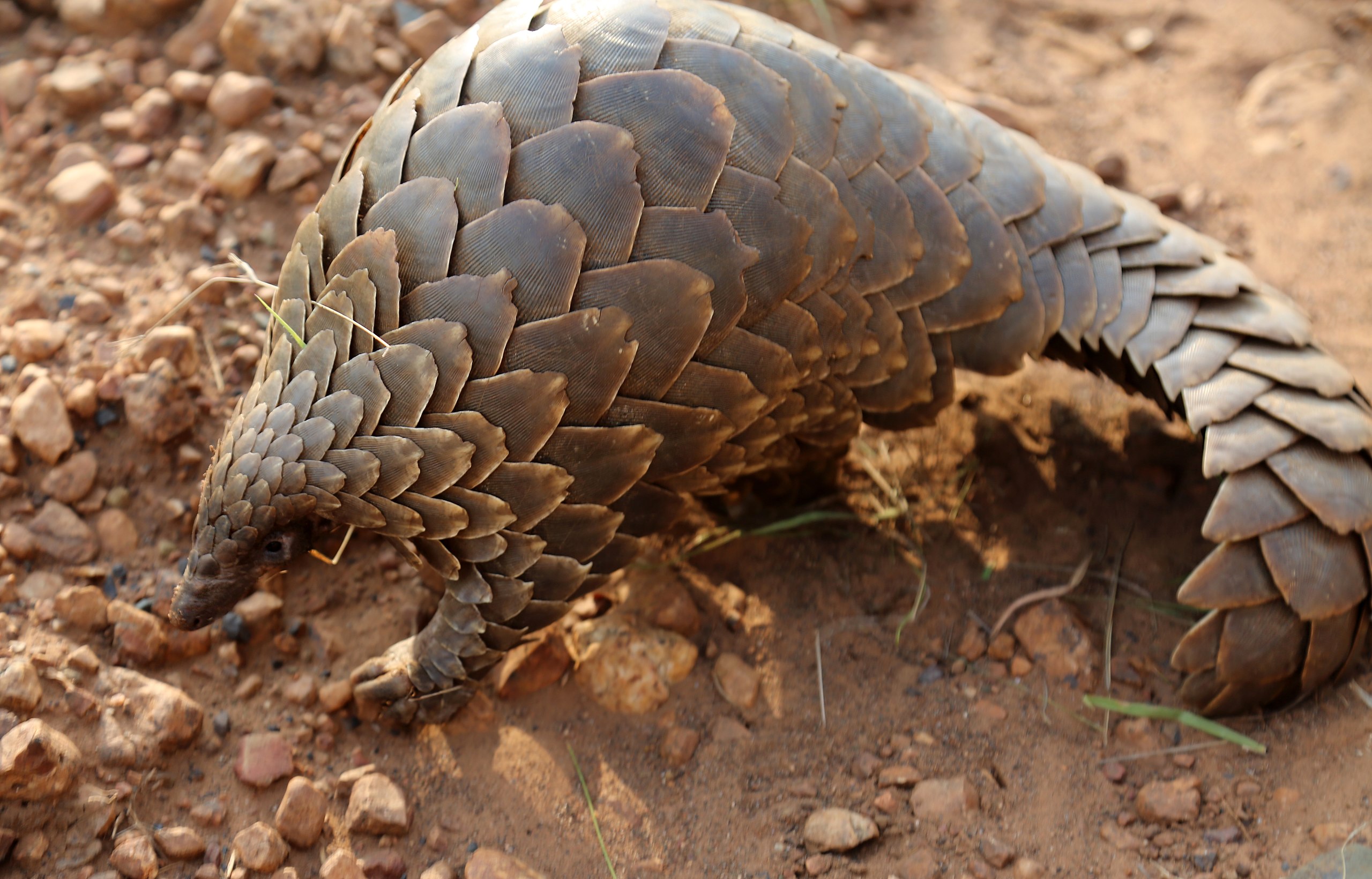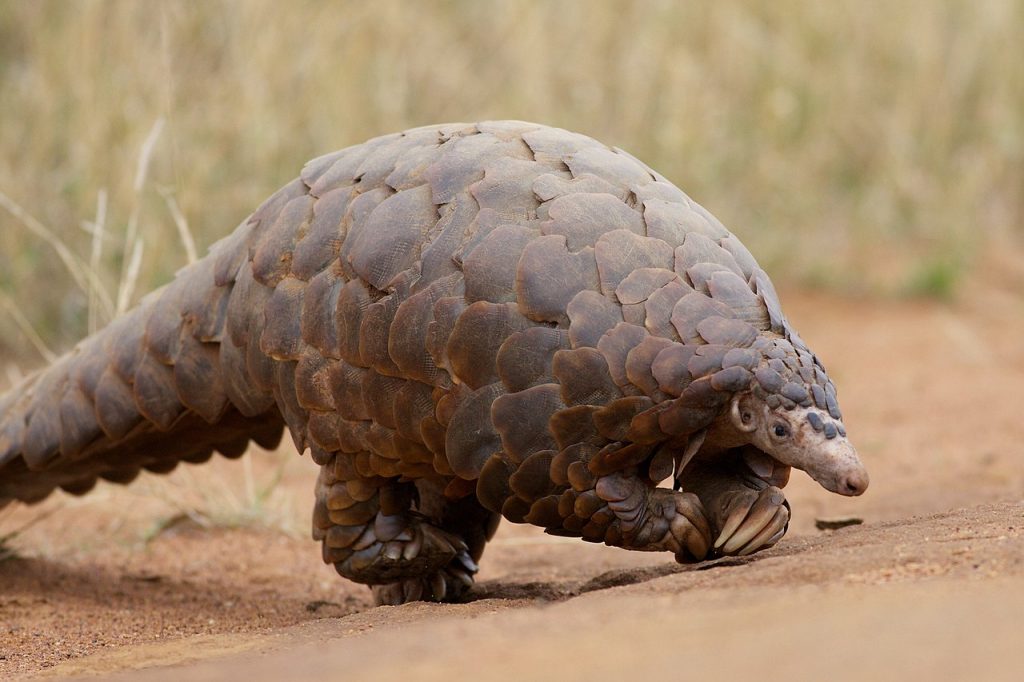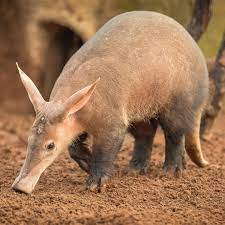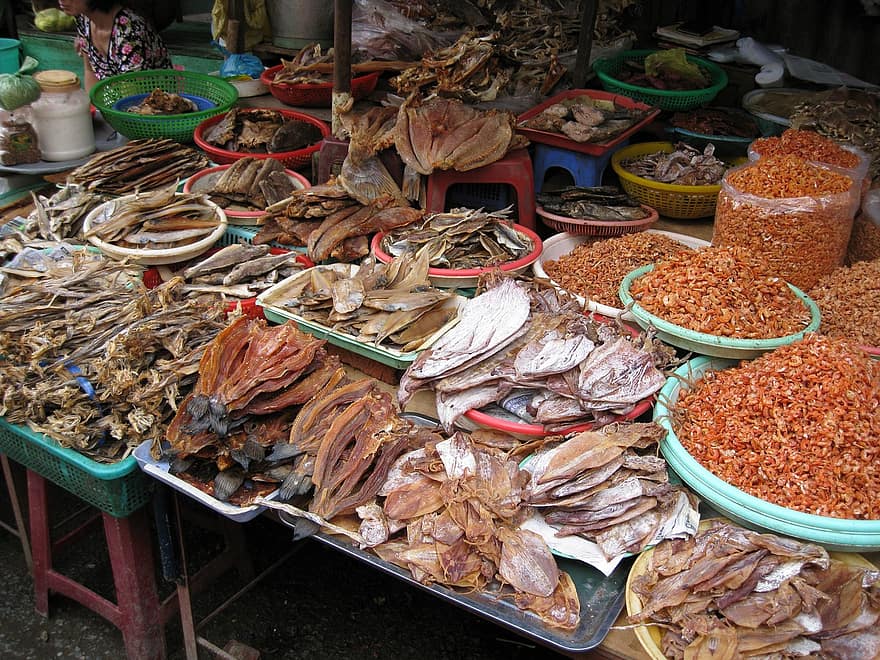Long thought to be extinct in the country, one was caught, back in 2018. As a result, effort is being put into protecting this species. Farmland around the Serengeti erected...

Pangolins or the family Manidae
Pangolins are a strange group of animals. There is little other animals that look like them. Oddly, they are in the same supergroup as Bears dogs cats and other carnivores, though given that they eat insects they are carnivores. Indeed, in the past there was an order Insectivora, however this order has been abandoned, as it turns out some insect-eaters are not closely related (indeed, while often looking similar it appears that this is generally a case of convergent evolution – i.e. similar habits and similar requirements requiring the same body parts, so you end up with a similar animal.
Anyway, in this instance, it is not surprising, as all of the pangolins are part of the same tribe – sister genera essentially. There are quite a few ” cousins” species at one point but all these have gone. I would hope, that at some point people would stop believing that Keratin (a pangolin scales is made of the same substance as human nails, yet while chewing your own nails is seen as bad manners, for some reason pangolin scales, like items like rhino horn, are claimed to be able to cure everything from headache to erectile difficulties. Of course, there is no scientific case for this belief, but that has not stopped the price of these scales has reached $3000 dollars per kg, with an animal holding about half a kg (the most scaly is the Philippines pangolin, which holds almost a kg – this is the equivalent of almost a year of a local salary, unfortunately making it well worth it, to spend months looking for this rare animal)
The Manidae (in ancient roman religions this was meaning spirits- chthonic deities of deceased loved ones ) includes 3 genera.
Manis contains all of the surviving Asian Pangolins known as the Asian Clade, though the last 3 are in Subgenus: Paramanis – southeast asian pangolins
Please note, I have not included Manis .sp which is a proposed fifth Asiatic species of this family, and this is still a long way from being confirmed.
Due to their cryptic nature, and current hunting pressures, there is little tourism around these species, and little likelihood of any in the near future. As such, while I would like to separate these species out into their own pages, it is unlikely to ever be necessary within the scopes of this website. Having said this, I am looking for partners, should anyone be working with tourism of these species, do get in touch through the link at the top of the page – we can mask the location, but are keen to help give living pangolins a worth as soon as possible.
Below is a list of each species, with a video of them. We hope to add links to go see them, and support their long-term future, we will have to see if tourism of these strange animals every takes off.
Chinese Pangolin
The Chinese pangolin is listed as critically endangered, having had an 80% decline in its population in 21 years (or 3 generations). Its threat is poaching for the illegal wildlife trade.
It is thought that at most 10,000 remain now. Given the huge number poached from elsewhere each year, it is highly unlikely that poaching for this species has stopped. They may well be hunted into extinction in the near future.
Indian (thick tailed) pangolin
The Indian pangolin (also known as >thick-tailed pangolin and scaly anteater) is a species found on the Indian subcontinent. It is listed as endangered, and CITES appendix 1
The size of the population is unclear (generally all estimates are very vague as they are usually secretive nocturnal animals rarely seen by humans
Philippine (Palawan) Pangolin
The Philippine pangolin (also known as the Palawan Pangolin) is only found in the Palawan district. Its habitat includes primary and secondary forests, as well as the grasslands that surround it.
It is listed as critically endangered by the IUCN, though with no idea of the former population, and no idea of the current one, it is hard to have any idea. People estimate that the population has fallen by 95% in the last 40 years.
Sunda (Malayan or Javan) Pangolin
The Sunda Pangolin (also known as Malayan & Javan pangolin) is found throughout Southeast Asia, including Myanmar, Thailand, Cambodia, Laos, Malaysia, Singapore, Vietnam, and the islands of Borneo, Java, Sumatra and the Lesser Sunda-Islands. It lives in forests (including plantations) and spends much time in trees.
It is listed as critically endangered, with a further 80% decline expected in the next 20 years unless something changes. Positive news, is that unlike elsewhere, where locals don’t see pangolins anymore (because there are so few) here they are still seen. The video is a rescued baby of this species.
In the African Clade, there are 2 subfamilies each containing 1 genus, and each containing two living members
Smutsiinae (large african pangolins ) Phatagininae (Smalll african pangolins) Genus: Smutsia (African ground pangolin) Genus: Phataginus (African tree pangolin)
Giant pangolin
Found from west Africa to Uganda, it weighs 30-40kg and can grow to 1.8m long (including the tail, which is almost as long as its body). It is found in savannah, forest and rainforest, anywhere with large termite populations and a source of water.
They are threatened by foolish beliefs about the medicinal value of pangolin scales – education does help, and much work is being done to deal with the demand in Asia. Demand has dropped dramatically in China, though places like Vietnam have recently developed a desire for similar things.
The penalty needs to be huge, in order to stop the slaughter before we loose these unique species.
The giant pangolin is CITES appendix 1, meaning all trade is banned. It is thought to be extinct in Rwanda. Part of the problem with trying to conserve a species like this, is that it is so hard to see in the wild – without expertise, you could share land with large numbers of pangolins and never see one – as such estimates of the size of the population are hard to come by.
Ground (Temminck) pangolin
Found throughout Southern and Eastern Africa, the ground pangolin has a length between 56cm and 1.6m, with the tail measuring up to 70cm.
It is also known as the Temmink pangolin. They are classed as vulnerable, and prefer savannah woodland, with plenty of scrub. It is given a vulnerable rating, as it has declined by more than 10% in the last 9 years and are expected to have declined by a further 30% or so in the next 18 years – a decline of 30-40% over 3 generations is the definition.
While conservative estimates, suggest that just 10,000 are trafficked each year, a more reasonable estimate would be 250,000 ever 2 years, or more than 10 times the original estimate.
Unfortunately, being shy and nocturnal, it is rarely seen making it very hard to know how many are left in the wild. This obviously makes it hard to know which areas have healthy populations, and which have been poached out.
We need to do better. Finding more out about this fascinating animal (and assuming we can end the poaching) these weird creatures might be capable of providing large tourism income, even in relatively small reserves. Having a density (in good parts of South African lowveld) of as high as 0.12km squared (0.3 per square mile). While this is low, it does suggest that even a small reserve might have 100 of these animals.
Long-tailed (black bellied) pangolin
Also known as the black-bellied pangolin, its name comes from its appearance. It has a long tail, and black hair on its stomach.
It is usually 30-40cm long with a tail 60-70cm, and generally weights between 2 and 2.5kg. The tip of this species tail is bare, and slightly prehensile, allowing it to feel around and hold onto branches as the animal works its way around the treetops.
Interestingly, unlike other pangolin species this one is diurnal or active during the day (though this may be an adaption to not be in competition with the tree pangolin, which shares a similar range). They communicate with other individuals through scent. Found in moist, tropical riverine and swamp forest environmentsthey have been found in partially cleared forests bush, as well as farm-land, generally former lowland rain forests. They are almost exclusively found in trees, and at that, high in the forest canopy. They prefer to live deep in the interior part of the forests, avoiding areas too near the outside.. They are capable swimmers, and are usually found near water, often dropping off branches into the water below.
Their scales have become relatively good camouflage, as well as an extremely good defence mechanism (not only does a predator find it hard to get inside, once it has rolled up, but each scale can also be sharp.
Given their ability to live in disturbed habitat, it is really only the poaching that threatens this species.
Tree (white bellied) pangolin
Also known as the white bellied pangolin, or the three-cusped pangolin, they are more common than the long-tailed pangolin. Measuring 33-43cm long, with a tail 49-62cm, they are smaller than some of the other species. There are 2 recognized subspecies, one confined to Uganda and another everywhere else.
Also relatively tolerant of changes to the environment, they can do reasonably well on plantations. It is the most common pangolin found as bushmeat, and its population is thought to have declined 20-25% between 1993 and 2008 (3 generations). As a result, its conservation status has moved from least concern in 1996 to becoming officially endangered in 2019.
Further rare footage of a Pangolin (and an aardvark) looking for food, from the BBC documentary 7 worlds one planet. We will add links to go and see each of these as we get them. They will appear at the bottom of the page
You think pangolins greatest threat is the poaching? not everywhere, what is worse?
- Tim
- June 5, 2023
Pangolins are bizarre animals!

How many of you knew about a pangolin? How many of you...
Rare sightings, where even a wildlife guide gets excited Aardvarks and Pangolins – and seeing them in the zoo
- Tim
- June 13, 2022
When you go on safari, as with other places there are animals that while fascinating you can be almost certain you will not see.

Are financial institutions around the world supporting pangolin poaching?
- Tim
- December 13, 2020
In the wild there are 8 pangolin species, 4 in Asia and 4 in Africa. The country you that is best known for using pangolin scales in ancient history is...
A benefit of Covid-19? Might it save the pangolin?
- Tim
- May 28, 2020

The pangolin is a creature that until a few years ago was known by next to no one in the world. Although found in a surprisingly large range of habitats...
Back to normal: moving forwards
- Tim
- June 11, 2024
For those who come to this site regularly, you may well have noticed a break in out blog contents - we have been concentrating on other parts of the website....
Nigeria is becoming the clearing house for poached animals from throughout west Africa: they must stop it
- Tim
- March 23, 2021
Between 2015 and 2019 30 tonnes of ivory and 167 tonnes of pangolin scales were seized. This equates to roughly 4400 elephants dead, and 167,000 pangolins. As in other places,...
Liberia in west Africa still has large forests blocks, camera traps show that they are full of wildlife
- Tim
- March 11, 2021
Liberia is a country in west Africa. It still has large tracts of intact rainforest, however until recently these areas have not been scientifically thoroughly surveyed,

10 years to save the worlds wilderness?
- Tim
- March 11, 2021
1/3 of the worlds species are threatened with extinction. There are many suggestions that this is just a natural process, but in recent decades it is not. This is not...
Perhaps one good thing come out of the epidemic-Chinese people are finally prepared to change behaviour towards wild animals
- Tim
- February 7, 2021
Unfortunately as the wealth of the Chinese middle class has grown, these several 100,000,000 extra people have wanted the traditional medicines that supposedly there ruling ancestors once enjoyed. The start...
Review: extinction: the facts
- Tim
- September 30, 2020
In recent years the BBC has stopped trying to cover over the threat to the natural world in their world famous documentaries. This once as you can see, deals with...
In Africa the big 5 is famous, what is the UK’s equivalent
- Tim
- August 31, 2020
Apart from b the big 5 and ecotourism big 7 there are a whole host of 5s that have been invented-some are relatively easy, others almost impossible
Big 5: lion...
Vietnam bans wildlife trade in the hopes of stopping a future outbreak
- Tim
- August 18, 2020
A substantial number of the most recent epidemics, or potential epidemics, have come out of wild areas and generally illegal means of hunting.

We are beginning to see the impacts of covid-19 on on conservation efforts, and thankfully in some places it’s not too bad
- Tim
- August 8, 2020
Between the sudden loss of virtually all tourists, and the removal of game rangers and wildlife guides, there has been an alarming spike in the amount of poaching that has...
Uranium mining within a tiger reserve
- Tim
- July 15, 2019
Nature reserves in India are rather different to what was set up in Africa. In Africa there are six nature reserves or national parks which have enough space to have...
Review of Kruger National Park
- Tim
- January 6, 2018
- Size [usr 4.5]
- Facilities [usr 5]
- Range of animals [usr 5]
- Road quality [usr 4.5]
- Wildness [usr 3.5]
